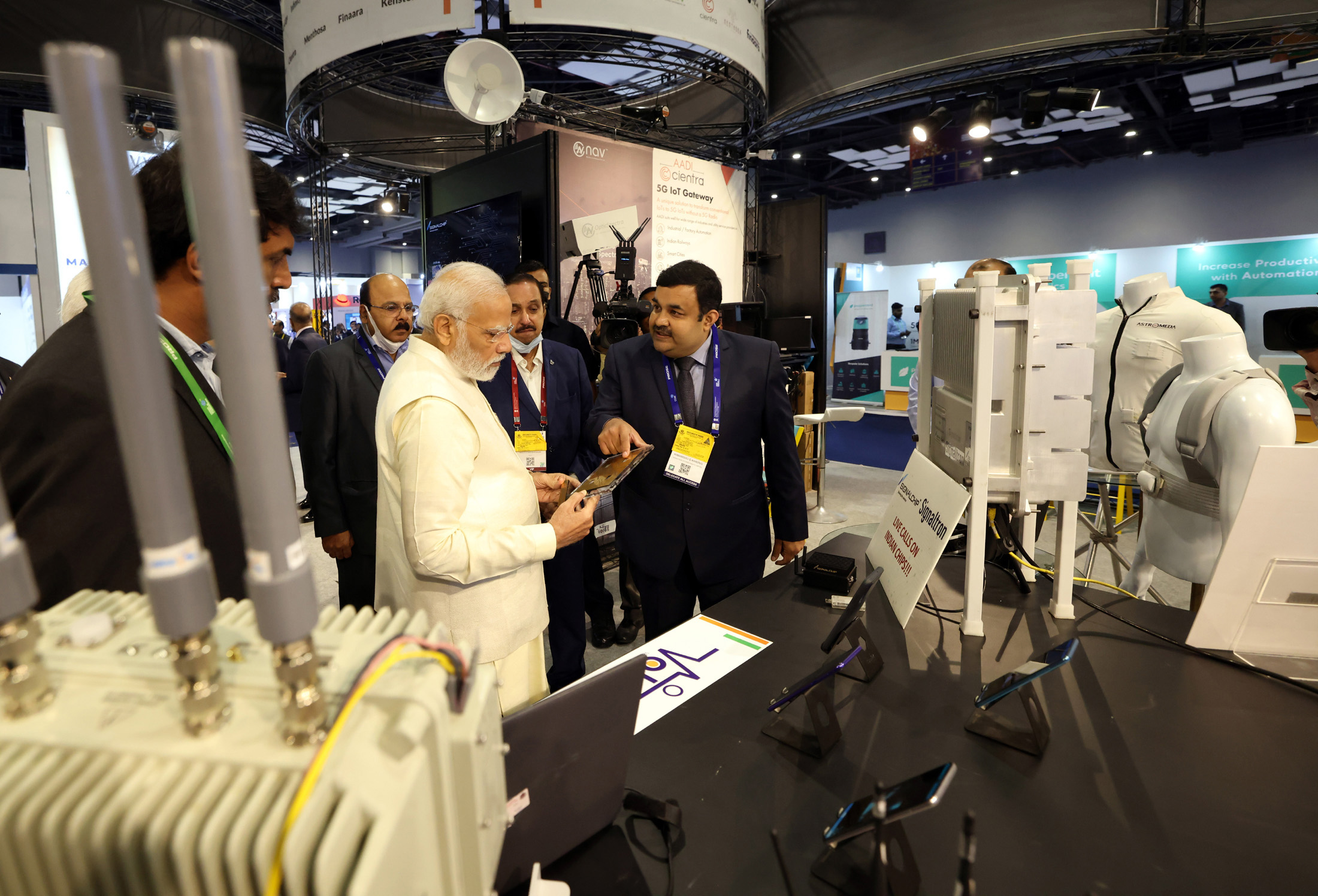
When PM Narendra Modi on October 1 launched the 5G at the 6th edition of India Mobile Congress, he set the ball rolling for a new era. Will it prove a boon by unleashing an infinite opportunities or a bane because of its adverse environmental impact? A report by Sunny Sharma
The world of cellular networks is getting better by the day. The introduction of the fifth-generation cellular network, 5G, is changing the game and is already replacing the 4G networks and offers seamless services to users in need of internet data. Even the developers benefit from the 5G network as they get to deploy their applications faster than ever.
India, at present, ranks at the bottom of the heap in terms of Internet speed. As we embrace the fifth-generation (5G) mobile network technology, there’s a discernible buzz that faster and more reliable cellular services will be the new normal in the near future. The enthusiasm over connection speeds 10 times faster than 4G is articulated in a recent consumer survey. Almost 90 per cent said they intended to upgrade to the new network, notwithstanding the likely higher costs and adoption disruptions the telecom giants could face.
However, like everything else, 5G has its own advantages and disadvantages and in this article, we should have a look at those. The fifth-generation cellular network is much faster than its predecessor when it comes to functioning on smartphones or any other device. The casual users get access to movies and videos in seconds using 5G and the organizations can use it for automation, advanced web conferencing, and more using up to 20Gbps of internet speed it provides. With faster speed than ever, 5G also provides a very low latent network as compared to 4G or 4G LTE, and applications such as AI, IoT, virtual reality could operate very seamlessly using the cellular network.
One of the best things about the introduction of 5G is that its delivery capacity is a hundred times better than that of 4G. Users can get much better performance as 5G allows a smooth transition between cellular and Wi-Fi wireless strategies. Probably the biggest advantage of 5G is the increased bandwidth it provides aiding in faster transfer of data. It provides connectivity across multiple devices such as drones or sensors as well. The option to smoothly connect with IoT can help industries to increase their productivity among other things.
Hacking threats
Even though 5G is a faster and efficient cellular network in history, it does have very limited availability. Only developed cities around the globe may benefit from the 5G network and it will be a while until everyone gets access to it. The 5G frequency can be hindered very easily by tall trees and buildings and even rain. More towers are needed to increase the coverage which is expensive as well as time-consuming.
Although users get amazing download speed with 5G network, the upload speed, however, is not that fast and isn’t even more than 100Mbps as compared to 4G. The other issue users face is the draining battery because of the usage of 5G connections. New battery technologies are required to be introduced by manufacturers in order to resolve the issue.
The increased bandwidth of 5G also creates a higher probability of hacking than ever before. Companies using it across multiple devices need to deploy extra security infrastructure in order to protect their data. The lack of encryption also makes it quite easier for hackers to attack exactly where they want to. Consumers need to be more aware of the security while using 5G networks.
Impacting aviation, environment
In January this year, several airlines including Air India cancelled flights to US as the telecom operators in the country were trying to roll out 5G operations in the country. One of the major reasons behind the cancellation of flights was the interference of technology with flight operations.
A lecture on the expert conference on Wireless and Health at IIAS has shown that milli meter range electromagnetic frequencies have the ability to affect organic matter. Essentially, the frequency has reached a level where it now directly interacts with human cells.













